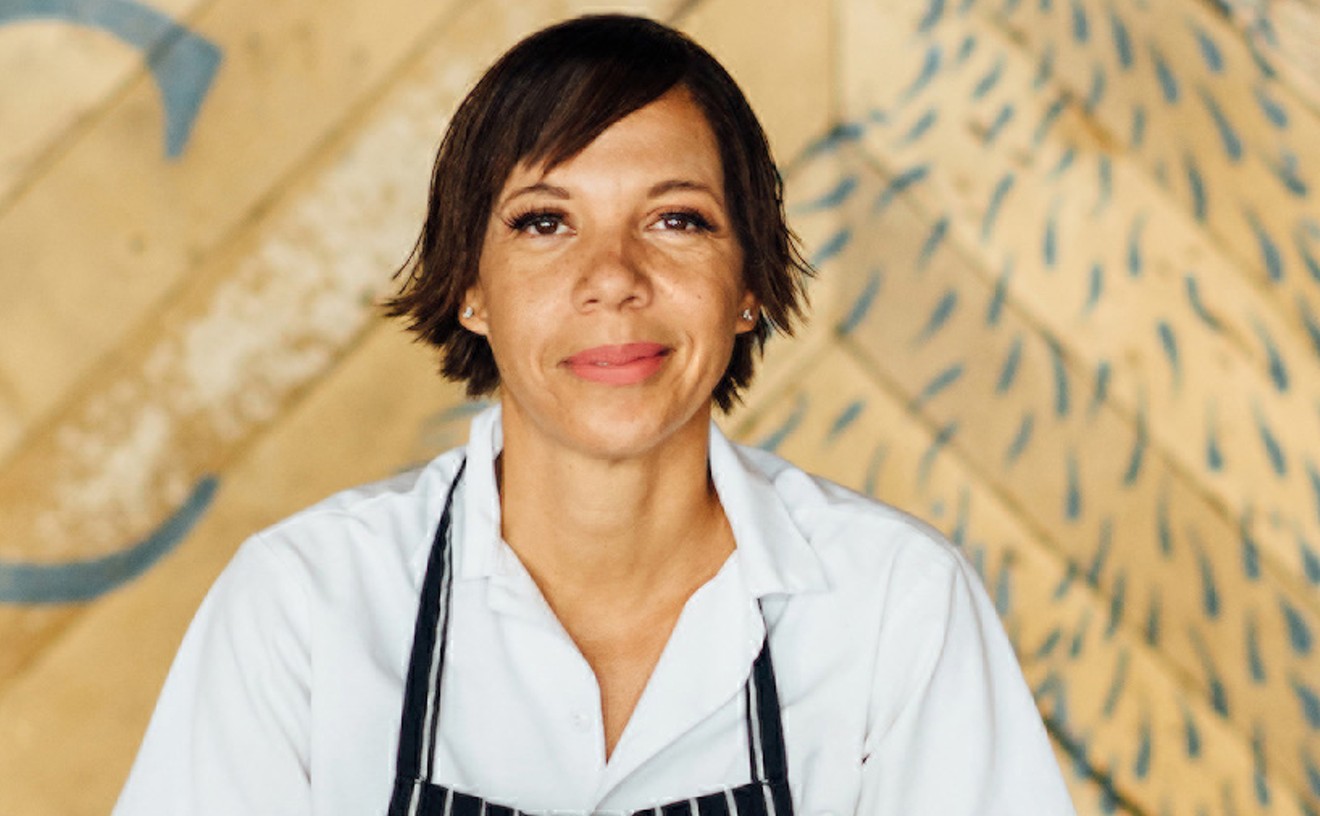A couple of recent eating experiences, though, indicate that satisfying snacking is not just possible at the Village, but doable without seriously upsizing body measurements or downsizing one's wallet. The venue is Café Ibiza. The chef is Anthony Mansolillo, an Italian American who grew up in South Florida hunting Everglades game and made his mark (and money) in the construction business, burning out in the aftermath of Hurricane Andrew. He took in culinary school and experienced European kitchens, then traded in his hardhat for a chef's toque. The food is basically tapas -- but not the traditional Spanish one-bite bar snacks as invented in nineteenth-century Andalusia (probably from a tavern practice of placing saucers over wine glasses to keep aroma in and flies out; someone eventually realized a few salty olives on the saucer would increase bar sales). Rather, Cafe Ibiza's menu is divided into six Mediterranean regions to which Mansolillo traveled (Spain, France, Italy, Greece, Morocco, and the Middle East), with five offerings from each.
All the tapas I tried were lightened-up creative interpretations, more traditionally inspired than traditional, with special emphasis on local ecologically sustainable species like Everglades hybrid striped bass. They were also sized less like single-serving traditional tapa than like racións large enough to share with a few friends; at one dinner, six $6-$20 "small plates" plus a bottle of wine satisfied, without stuffing, four of us for about $115 including tax and tip -- which the Ibiza does include on the check, 18 percent worth, but our server did specifically mention it. This was very thoughtful, since the wine, an unusually rich but balanced Albarino whose aromatic fresh fruitiness especially complemented the seafood dishes, was very potent.
Since most "global" eateries are obviously more inspired by certain of the national cuisines they attempt than others, it was odd to find favorites in all six of Ibiza's categories. But Spain had two outstanding items. Tender, crispy fried calamari came coated in the airiest light batter I've had in years -- possibly ever -- and the pickled hot red pepper slices that came with it were a perfect fried-food foil. The dish could only have been better had the excellent, extremely garlicky aioli sauce poured on top instead been served on the side, so as to not compromise the coating's crunch.
And Everglades striped bass served atop wild mushroom risotto, though a farmed fish, was barely distinguishable from its wild parents, striper and white bass; maybe a bit less coarse in texture and slightly less pronounced in flavor, but basically just as sweet and flaky -- and the moist fillet's salty pan-seared crust was wonderful.
From the Middle East menu came another farm-raised fish, cobia, that to me tasted even better than the wild version I've caught myself under a different name (ling). Of course the skilled grilling and accompanying spiced white bean purée could've had something to do with the flavorfulness. Mansolillo has actually presented this versatile fish several ways on his seasonally changing menu, including in a terrific ceviche I tried at an event where the fish tasted like white tuna, so I was slightly sorry to miss a former preparation in curry sauce; a curried chicken with vegetable couscous, however, was a spectacular fall sub.
From France an original moules/frites tapas featured six mussels that unfortunately were no better than mussels usually are in the United States; one tasted outright off. But a mustard/wine sauce mostly disguised the mussels' imperfections, and the skin-on shoestring fries were very good if soggy -- again, sauce on the side would've been a better idea.
A salad of wood-roasted fresh beets came perfectly dressed in a light champagne vinaigrette, but could have used more of its two accent ingredients, candied pecans and goat cheese.
Of two Italian selections, supersized pumpkin ravioli, al dente pillows filled with velvety-smooth purée with lots of toasted hazelnuts and a sage butter sauce that screamed "Thanksgiving!" were a hit. But grilled flatbread was one of those "better order two" items: superthin charcoal-charred crust topped with milky fresh mozzarella, intensely concentrated roasted tomato wedges and garlic cloves, and the crispy accent of deep-fried whole basil leaves.
Greek-inspired spanakopita was superior to any I ever had in Greece because of superior stuffing. In place of the usual well-done spinach/cheese mélange were barely-cooked spinach leaves and a separate dollop of creamy feta, plus pine nuts and raisins.
And though Morocco has never been a country high on my vacation priority list, Café Ibiza's roasted whole boneless quail, which is only partially boned but stuffed with a rich mix of herbed goat cheese and fig halves, dotted with a fig demi, and accompanied by a lovely little mâche salad, could be a priority-adjuster.
Also good: the bread, which the café, in its efforts to emphasize healthy lower-carb eating, does not provide automatically. Ask for it. Our daily bread was a soft sun-dried tomato baguette, and its accompanying bowl of buttery, extra-virgin olive oil drizzled with balsamic vinegar was both dip and a nice dressing for the greens that garnished most plates. Tomorrow for Atkins.










